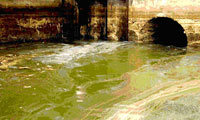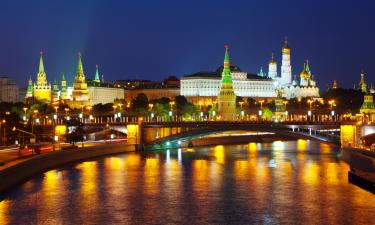The stench of medieval Europe still echoes today
People normally associate different epochs with different smells. The Middle Ages smell of sewage and decaying bodies. German writer Patrick Suskind, the author of a well-known novel “Perfume: The Story of a Murderer,” wrote in his book that the stench of European cities in the late Middle Ages period was unbearable. His work conveys the terrible smell of human faeces and urine in the streets, decaying wood and rat dung, spoiled coal and animal fat, mouldy dust and chamber pots.

Stench used to be an inseparable part of all human activities, constructive or destructive. The Queen of Spain Isabel of Castle (the end of the 15th century) confessed that she had taken a bath only twice in a lifetime – when born and married. A daughter of one of French kings died of lice. Dysentery and scab caused fatal terminations to Popes Clement V and Clement VII correspondingly. Duke Norfolk neglected bathing for religious reasons. As a result of such disregard numerous abscesses dotted his body.
A billet-doux sent by the inveterate Don Juan Henry of Navarre to his sweetheart Gabrielle d' Estrées became an anecdote. Its contents conveyed the following meaning: “Do not wash yourself, my sweetheart, I’ll visit you in three weeks”. The king himself took a bath only thrice in a lifetime, twice coercively.
Russian ambassadors at Louis XIV court wrote that His Majesty stunk like a wild animal. Europeans considered Russians perverts because it was a tradition for the latter to take steam baths once a month.
European cities were buried in sewage. Town residents splashed the contents of garbage pails and washtubs out into the street on the heads of carefree passers-by. Stagnated slops made stinking pools; and a great number of town pigs crowned the whole picture. People emptied chamber pots right out of their windows making streets look like cesspools. Bathrooms were the rarest luxury. Fleas, lice and bugs swarmed in rich and poor houses of London and Paris.
Unsanitary conditions, diseases and starvation personify medieval Europe as it was. Even the noble class could not afford to eat their fill. Noble families were happy if at best two or three of ten children survived. Delivery was quite an undertaking for women: a third part of them died in labor. Street illumination also was poor – oil lamps, splinters or wax candles at best. Hunger, smallpox, leprosy and syphilis disfigured people’s faces.
There were not any cleaning agents or the notion of personal hygiene in Europe up to the middle of the 19th century. One Italian nobleman said in his memoirs that in the 16th century it was impossible to walk along the streets that resembled a fetid stream of turbid water. He had to hold a scented handkerchief or a small bouquet to his nose not to vomit. But not only faeces poisoned the air. Butchers slaughtered and disembowel cattle right in the streets. They wouldscattergutsaroundandpourbloodoutontothepavement.
In late Middle Ages people learned to process wastes and faeces. Urine, for example, was used to tan leather and bleach cloth, animals’ bones – to produce flour. In days of old painters placed barrels for urine near the farms, they used it to knead paints. In Ancient Rome they sold even the urine from latrines to wool dyers and leather tanners. What could not be processed was left in the street.
Rain was the only street cleaner in those times. And still, notwithstanding its sanitary function, rain was considered a providential punishment. Rains washed dirt out of all cracks, and raging sewage streams rushed through the streets. Just like this there appeared a small river Merderon in France (from French “merde” - shit).
If there were stinking funds in the country, in cities people defecated in narrow side streets and yards. Only after the ‘hydraulic revolution’ aqueducts and gutters appeared; they provided houses with water and removed the sewage.
People were not cleaner than the streets where they lived. “Water baths warm the body, but weaken the organism and widen pores. That’s why they can be dangerous and cause different diseases, even death”, a medical treaty of the 16th century runs. Medieval doctors thought that infectious air could penetrate through the cleaned pores. Owing to this cause all social bathhouses were abolished. In 15-16th centuries rich citizens had a bath at least twice a year, in the 17-18th centuries they decidedly stopped to wash themselves. The French king Louis XIV had a bath only twice in his life on doctors’ advice. But the procedure shocked the sovereign so, that he made a vow not to do it anymore.
All hygienic arrangements included only hands and mouth rinsing, but not the whole face. “By no means you should wash your face, - wrote medics in the 16th century, - as it can cause catarrh or weaken the eyesight.” As for women, they had a bath only two or three times a year.
The majority of aristocrats used scented rags to rub the body. It was recommended to moisten armpits and groin with rose water. Men wore small bags with fragrant herbs between the shirt and waistcoat. Women used only fragrant powder.
Medieval ‘neat’ persons often changed their clothes. They considered that it absorbs all dirt and cleans the body. But our ancestors were rather selective on this issue. Clean starched shirt for every day was a privilege for rich people only. That is why white crimped collars and cuffs that were the evidence of wealth and cleanliness of their owners became fashionable. Poor men neither washed nor changed their clothing. Most of them had only one shirt. No wonder – clothes were extremely expensive. The cheapest canvas shirt and one milk cow, for example, had the same price.
Translated by Ksenia Sedyakina
Pravda.ru
Subscribe to Pravda.Ru Telegram channel, Facebook, RSS!




